|
|
Post by onlyMark on Jan 29, 2015 23:02:24 GMT
You know how in different countries there are tourist routes or routes of significance, historical or otherwise, through the country?
Well, it seems there is one in Germany of which I’d never heard. Funny though at it seems it is about 3000km long leading from the north of the country to the south. In German it is called the Fachwerkestraße, in English the ‘Timber Frame Road’. It is a route that leads through numerous towns that feature timber framed houses in abundance.
There are about 100 towns and they all have in them the traditional style of house building, some half-timbered, some full.
They’ve been around for hundreds of years, the building technique superceded by more modern ones and the style used sometimes by more modern buildings to give them an aged appearance. However, the ones in the following photos are all original.
This is the town of Wetzlar.
No-one can really say as to when it was originated but there are Roman ruins not far away and current theory is that a town began to spring up from the 3rd Century on the River Lahn. It holds the title of being a “Free Imperial City of the Holy Roman Empire” because the highest court of the empire moved here when its location at Speyer (in south west Germany) was overrun by the French in 1689.
It features the usual suspects of a ruined castle and an old town on a hill and it was to the old town that I ventured to have a walk round. I’m sure in good weather it’d be a fine place to be, even Goethe had a summer her. However, for me is was a bit chilly.
|
|
|
|
Post by onlyMark on Jan 29, 2015 23:03:19 GMT
|
|
|
|
Post by onlyMark on Jan 29, 2015 23:04:23 GMT
|
|
|
|
Post by onlyMark on Jan 29, 2015 23:05:24 GMT
I then got down to the river, this is just a diverted part of it –  That’s more like it – 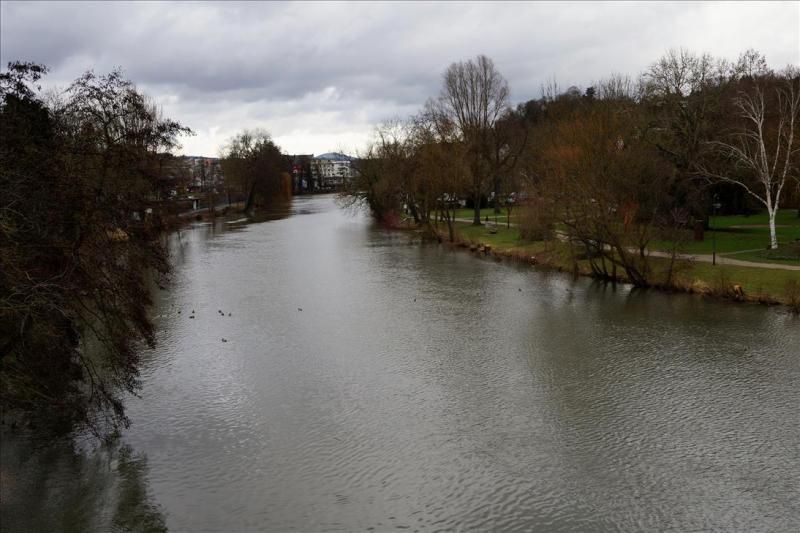 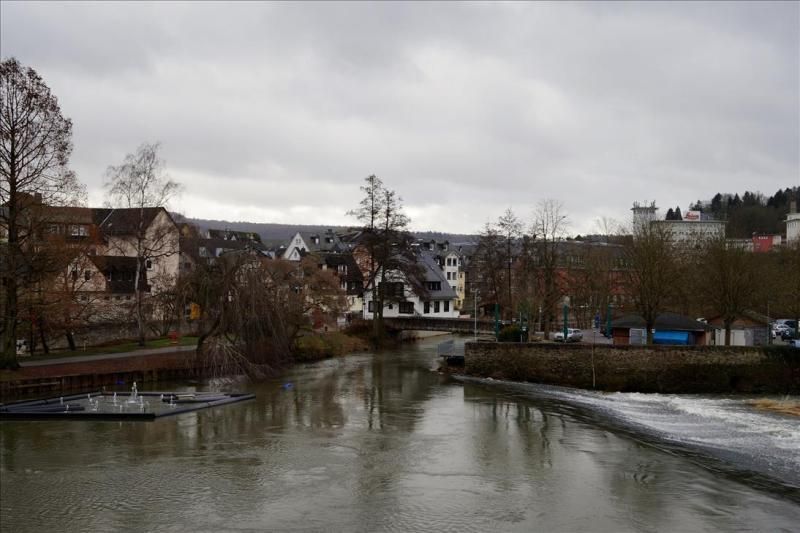 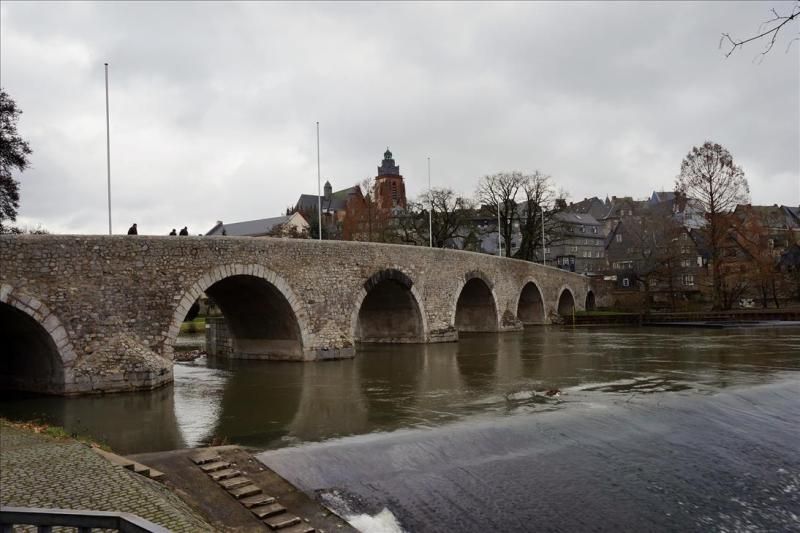 I then ‘spied’ something nearby. This is what it said – 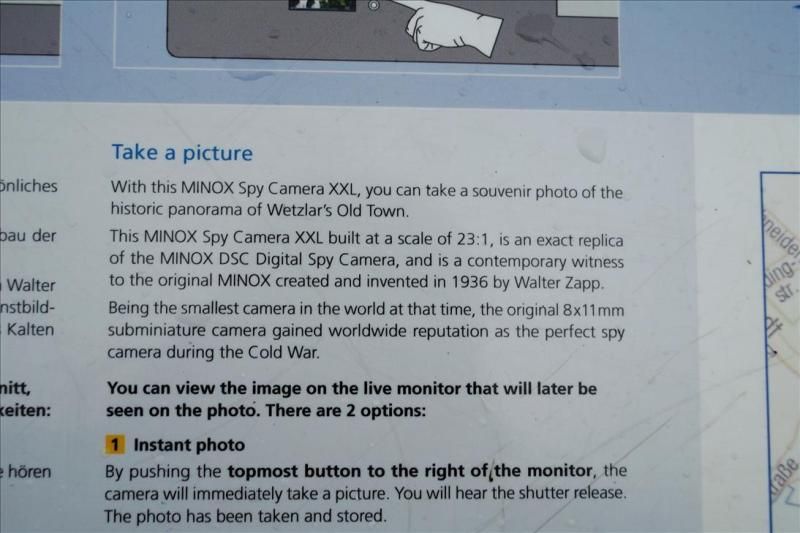 It was a rather larger model – 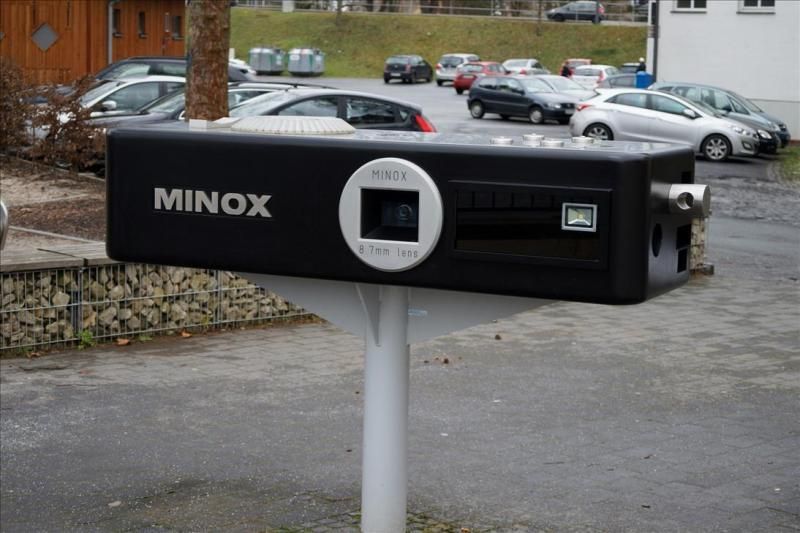 |
|
|
|
Post by onlyMark on Jan 29, 2015 23:06:51 GMT
In the distance you can see a red sign on top of a building. It says, Leica, where the original factory and research lab is/was for the camera manufacturer –  As I made way back I came across this. Can’t seem to get away from them –  The town is twinned with Colchester in the UK and this was gifted to Wetzlar in 1989. I wonder what Colchester got in return. Anyway, yet more buildings but they are getting a bit much now – 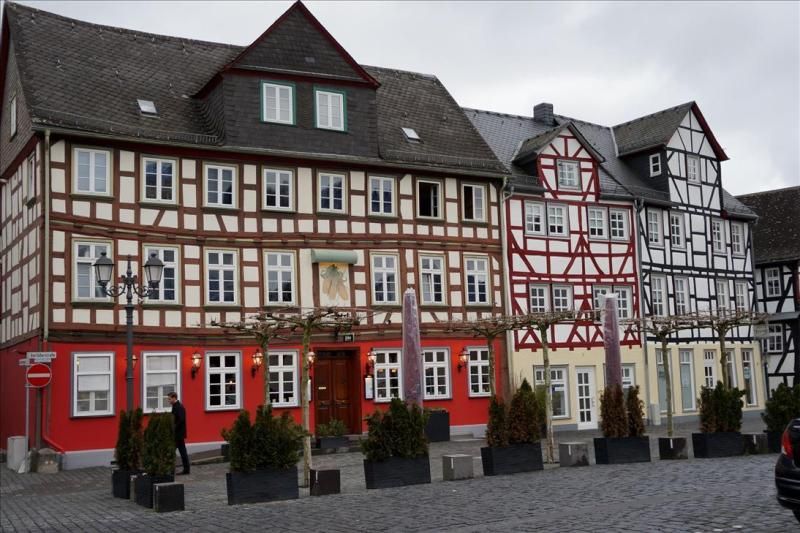 So I made my way back up to the cathedral. On the way I stumbled across the thing that is the feature of another thread made a little earlier. A Stolpersteine. 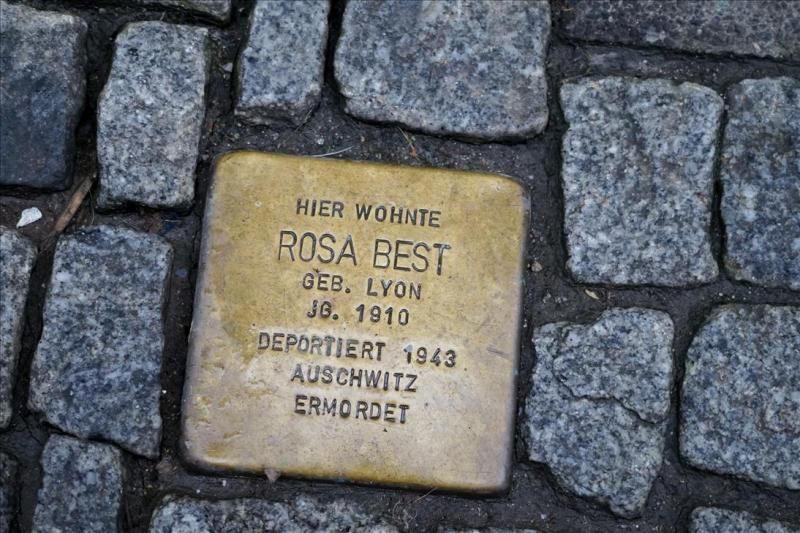 I also came across this. As I was taking the photo an elderly woman approached me. She asked what I was doing. I said, errr…. taking a photo. It’s interesting. We then got into a conversation whereby she asked me if I was ex-military. Later she told me she had a daughter working as an au pair in Solihull, near Birmingham. She then invited me to go to the church and pray for her. I demurred, and then left. A nice bit of history anyway – 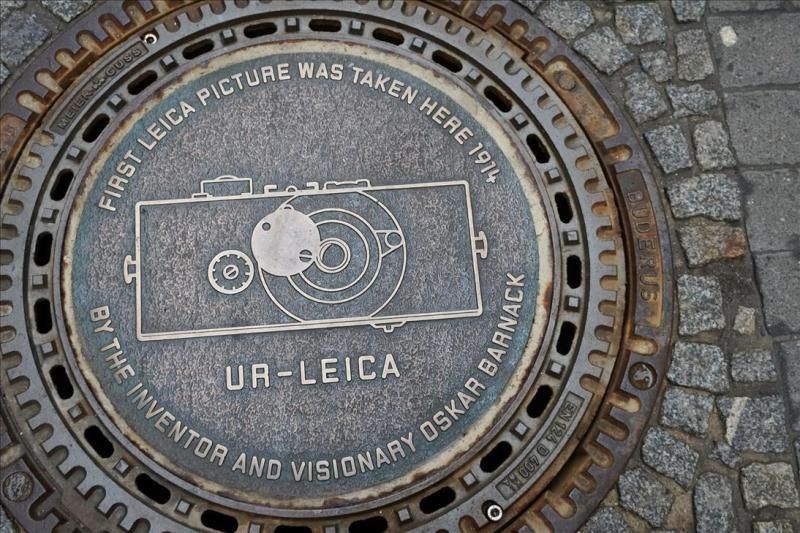 However, I’ll leave you with something that was a bit unexpected. Bye for now – 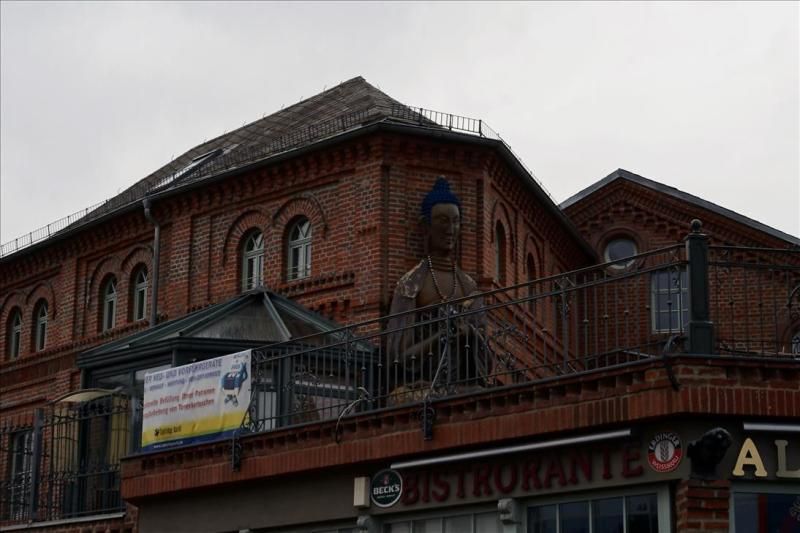 |
|
|
|
Post by mossie on Jan 31, 2015 20:42:22 GMT
A nice little tour Mark. Strange to have a manhole cover to mark the first Leica picture
|
|
|
|
Post by Deleted on Jan 31, 2015 20:51:00 GMT
Lots of beautiful timbered buildings. I would love to see a map some day of the various areas of Europe that chose that style to see if there is any rhyme or reason for it. Of course, there are plenty of English buildings like that, but also in France, all along the eastern borders but also in Normandy and the region of Limoges -- and there are certainly a lot of other places around the continent.
|
|
|
|
Post by mossie on Jan 31, 2015 21:55:01 GMT
Actually Paris would have many timber framed buildings, but a royal decree ordered that all buildings should be plastered over as a form of fire proofing. The old towns suffered disastrous fires which spread easily through the timber frames, the Great Fire of London in 1666 is a prime example.
The plaster was made from gypsum which occurs in large quantities in the hilly parts of Paris, Montmatre and Belleville, hence the term "plaster of Paris". Place Blanche got its name from the gypsum dropping off carts which were transporting it down to the Seine from Montmartre, to be exported all over the world.
|
|
|
|
Post by onlyMark on Jan 31, 2015 22:12:56 GMT
mossie, I expect somewhere is the first photo and the exact point was derived from that (not that you asked that, I'm just pondering). Or, they asked the bloke who took it to show then where he was standing and they said, Right oh, we'll stick a manhole cover here to mark the spot. Then they'd have a fight with the town council over if one was really needed, who was going to pay for it and who was going to lay it and pay their wages. No doubt six workers from the council turned up three weeks late, one did the digging and five told him how to do it. Then the representatives from Leica were told it'd been done, they went and saw it was in the wrong place and complained that they should have been there to supervise in the first place.
A date would be made to move it probably for six months later as the council men now had other jobs to do and on the day of doing it health and safety would turn up and say, it's raining, the cobbles are slippery, you'll have to postpone it again until the summer.
Everyone would go away to come back on August 31st, but the council men wouldn't because it was a bank holiday, then the Leica reps would end up doing it themselves only to be sued by the local authority for damaging the pavement.
A compromise would be reached whereby Leica would agree never to lay any more manhole covers that state that at that point the first photo was taken.
Hang on a minute................ I'm thinking of how it would be in England. Sorry.
In Germany it would be done differently. It'd take several years for the permissions to come through but the workers would turn up on time (two men and the van driver who'd park out of the way somewhere else, not block the whole street off), do the job as per the specifications (i.e the job will take four point six five minutes including wiping of hands and putting tools away) and that would be it. Perfect spot and everyone is happy.
Anyway, I suppose a manhole cover is as good as anything. Alternatively they could have hung a photo on the nearby building wall of the spot the photo was taken. That'd be weird.
|
|
|
|
Post by onlyMark on Jan 31, 2015 22:20:04 GMT
I'd expect that it was simply easier to build this way than with bricks/stone. Especially as the first industrial brick making machine wasn't available until the mid 19th century (looked that up), plus if there were no constituents to make the bricks locally then the bricks would all have to be transported from somewhere else. I doubt mid 17th century transport/roads was/were really up to the job.
Easier to get wood there.
|
|
|
|
Post by fumobici on Feb 1, 2015 1:49:19 GMT
Lovely little city, the name sounded familiar and it was from the Leica works. My grandfather would take photos with nothing else and would walk around with two around his neck if in touring mode. I inherited an M1 and a couple of lenses, but found I preferred using an SLR, so I traded the M1 in at a camera shop for a nice new Olympus set up which worked great for years.
|
|
|
|
Post by mich64 on Feb 1, 2015 2:57:25 GMT
Very enjoyable learning about this. I know of the Romantic Road but have never heard of the Timber Frame Road.
Plaster has become quite commonly used in new builds here, combined with brick though, not timber.
|
|